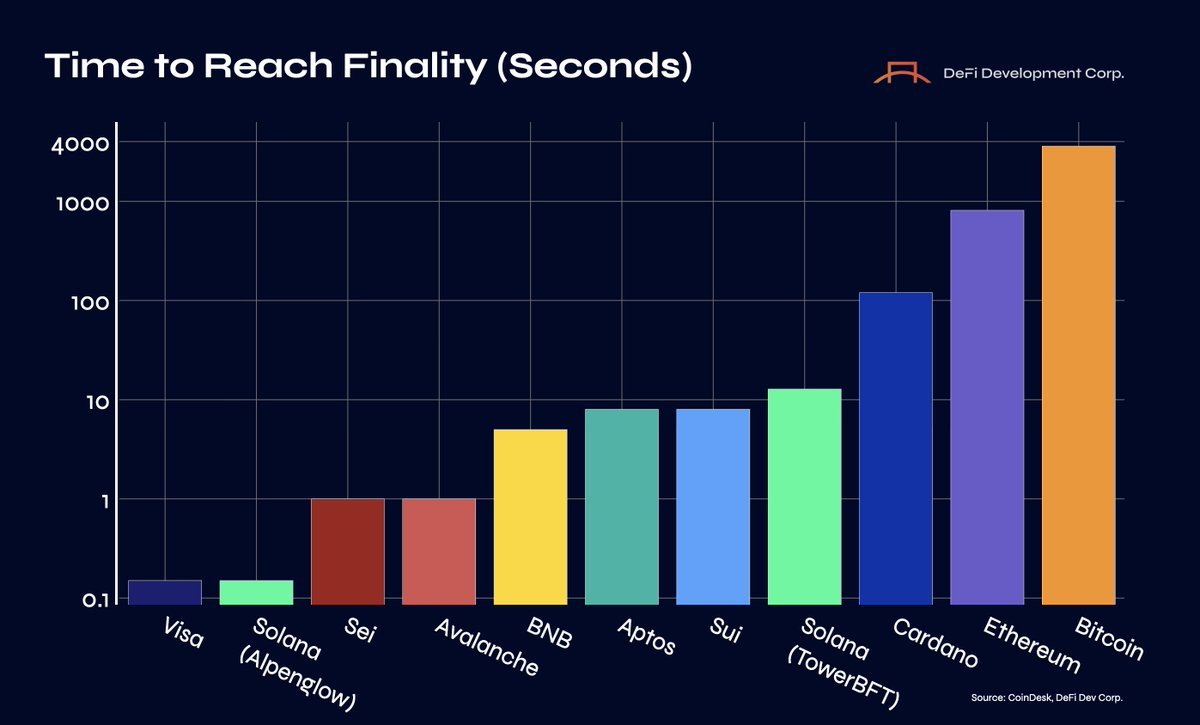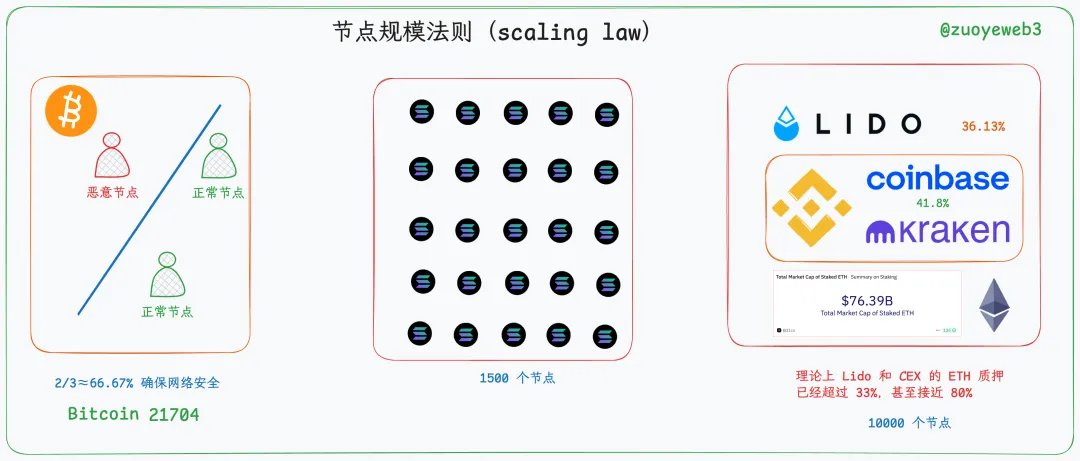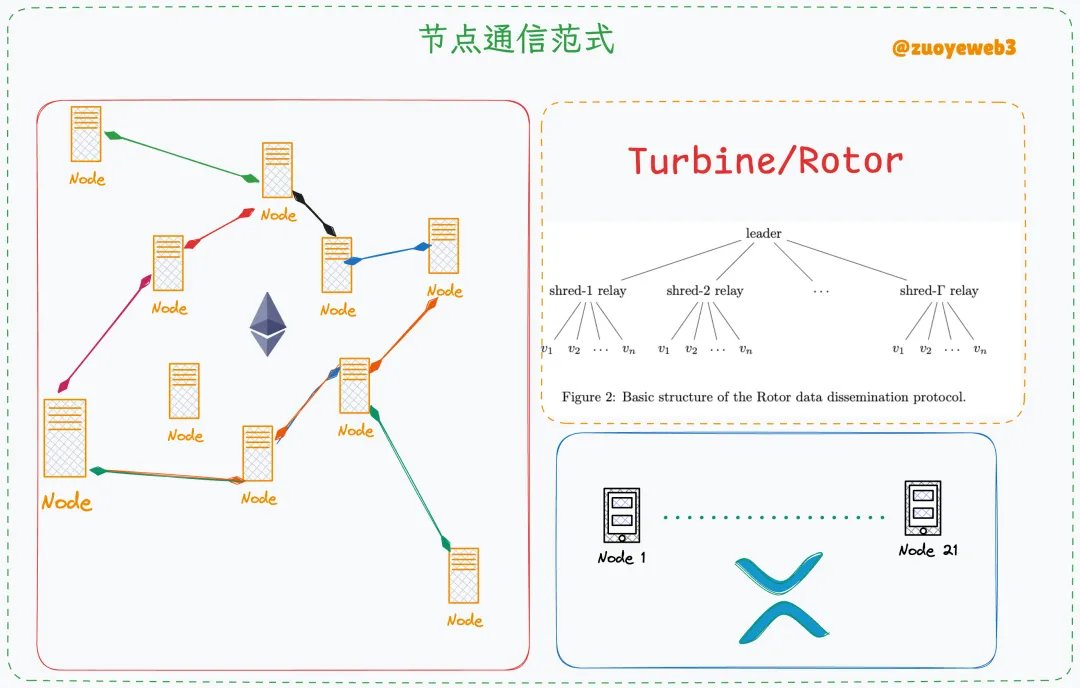People are talking about Ethereum and stablecoins, while Solana's #Alpenglow is also making progress in becoming the fastest L1, and stablecoin public chains are joining the race.
It doesn't matter, the speed of light is a common limit for everyone; can Solana make it this time?
According to predictions from @defidevcorp, if Alpenglow takes effect, the first Visa-level transaction system in the crypto world will become a reality.

Ethereum returns to the L1 narrative, Solana accelerates consensus
Ethereum begins supply-side reform.
After the dream of the infinite garden shattered, #Vitalik constrains the human debt of L2/Rollup, taking a more proactive stance to defend the #L1 track. The "speeding up and reducing costs" plan for the Ethereum mainnet is on the agenda, and the shift to #Risc-V is just the beginning. How to catch up with or even surpass Solana in terms of efficiency will become the main focus going forward.
#Solana continues to expand consumption demand scenarios.
Solana's answer is Scale or Die, steadfastly pursuing the path of strengthening L1. In addition to the #Firedancer developed by Jump Trading entering the deployment process, at this New York Solana conference, the Alpenglow consensus protocol from the @anza_xyz team took the lead, attracting everyone's attention.
Ethereum's ultimate dream is to be a world computer, coincidentally, so is Alpenglow.
## 20% Security Consensus in the Era of Large-Scale Nodes
Since Bitcoin, the number and dispersion of nodes have been synonymous with measuring the decentralization of blockchain networks. To avoid centralization, the security threshold is set at 33%, meaning no single entity should exceed this proportion.
With the boost of capital efficiency, Bitcoin mining ultimately leads to mining pool clusters, while Ethereum becomes the main stage for @LidoFinance and CEX. Of course, this does not mean that mining pools and Lido can control network operations; under the model of "maintaining the network - earning incentives/management fees," they have no motive to do harm.
Image description: Blockchain node scale law
Image source: @zuoyeweb3
However, measuring the health of the network must consider its scale. For example, in a small group of 3 people, a 2/3 majority is needed to be considered effectively operating. Pursuing merely the minimum security guarantee of 1/3 is meaningless; the remaining two can easily collude, with very low costs of wrongdoing and very high benefits.
If it is a large-scale network of 10,000, as Etherscan shows the current node scale of Ethereum, there is no need to pursue a 2/3 majority. Beyond the incentive model, most nodes do not know each other, and the coordination cost of collusion between Lido and @binance is too high.
If we reduce both the number of nodes and the consensus ratio, can we "speed up and reduce costs"?
Everyone should be able to think that Alpenglow is also thinking this way and is preparing to do so, maintaining Solana's scale of 1,500 nodes while reducing the security consensus to 20%. This can increase node confirmation speed, earn more mainnet incentives for nodes, and encourage the expansion of node scale, such as expanding to around 10,000.
Whether the effect is 1+1>2 or will break through the existing security mechanism could happen.
However, I really like that Solana should take the route of American chains, conspiracy groups, and centralization, participating in public chain competition as the opposite of Ethereum.
## Modifying Turbine, or Moving Towards DPoS
The theoretical idea of Alpenglow is that in the era of large-scale nodes, a strong consensus quantity is not needed because in a PoS mechanism, wrongdoers need to mobilize a massive amount of capital to take control. Even at a scale of 20%, based on current prices, Ethereum would need $20 billion, and Solana would need $10 billion.
With $10 billion, what else could one do? It would be crazy to try to control a blockchain, and they would also face retaliation from the remaining 80% of nodes, unless it is a state action.
In practice, #Alpenglow roughly divides the entire process into three parts: Rotor, Votor, and Repair (for more detailed divisions and workflows, refer to their paper). To some extent, Alpenglow is a deep modification of the Turbine mechanism, so we will briefly introduce #Turbine.
Image description: Block broadcasting mechanism
Image source: @zuoyeweb3
Turbine is Solana's block propagation mechanism. Simply put, Turbine is the messenger that spreads block information to achieve consensus confirmation among all nodes.
In the early design of Ethereum, block broadcasting was done through the #Gossip protocol, which in Chinese means "rumor, hearsay." Any node can act as the initial messenger and can communicate P2P with any node, ultimately achieving confirmation across the entire network, like "I have a message, I only tell you, and you must not tell anyone else," and eventually, the whole world will know.
We will temporarily skip Turbine and compare it with @Ripple's #DPOS mechanism. Ethereum/Bitcoin have achieved extreme point-to-point communication, but what is the cost?
It is extremely slow and expensive, which is easy to understand. Random pairing between nodes, although more robust and resistant to censorship, takes longer, and the cost is a consideration of node expenses. Since other nodes spread information slowly and need to maintain their own operations, the costs are naturally passed on to users in the form of Gas Fees.
Extreme decentralization inevitably brings the accompanying problems of being both expensive and slow.
Ripple's DPOS goes to the other extreme, initially setting only 21 super nodes across the network, completely solving any side effects through extreme centralization. Now the mainnet nodes have reached 179.
Turbine, on the other hand, moves towards a middle state, neither adopting Ethereum's Gossip mechanism nor reducing the number of nodes. Instead, it classifies network nodes for tiered propagation:
1. In each cycle, nodes are divided into Leader, Relay, and more ordinary nodes, with only Leader nodes allowed to send block broadcast information.
2. A small number of Relay nodes accept the information and continue to broadcast it to more ordinary nodes. This process is called the Turbine Tree, resembling a tree with clear hierarchies.
In Alpenglow, this protocol variant is called Rotor, which essentially is an orderly propagation of block messages, with any Leader or Relay node being non-fixed.
Votor is the node confirmation mechanism. For example, in #Alpenglow's vision, if the first round of node voting reaches an 80% ratio, meeting the minimum of over 20%, it can be quickly passed. If the first round of voting is above 60% but below 80%, a second round of voting can be initiated, and if it exceeds 60% again, it can be confirmed.
If that still doesn't work, then the Repair mechanism is activated, but I personally feel this is similar to the challenge period of Optimistic Rollup. If it really gets to this point, the protocol is likely to fail; the FDIC cannot prevent the bank run at Silicon Valley Bank.
Unlike violently stacking hardware and software resources to increase bandwidth, Alpenglow's starting point is to reduce the block consensus generation process.
If data blocks are kept as small as possible, for example, limited to around 1500 Bytes, and the generation time is kept short enough, such as in current tests, extreme cases can reach 100ms, which is 1% of the current 10s. (1 s = 1000 ms, though this is questionable; if it is truly large-scale practical, the conditions won't be so ideal, but it is still quite terrifying).
## Conclusion
After @megaeth_labs, the existing L2 has basically reached its endpoint. With #SVM L2 not receiving support from Solana, there is a practical need for the Solana mainnet to continue expanding. Only when the mainnet TPS overwhelms all competitors can the concept of Solana as Ethereum's killer be fully realized.
Alpenglow can also be applied beyond Solana; theoretically, any PoS chain, including Ethereum, can use its mechanism. Similar to what we previously introduced with @get_optimum, existing blockchain research has reached the technical edge and urgently needs more help from computer science and even sociological concepts.
IBM once claimed that the future of the world only needs five mainframes. If the internet formed by HTTP-TCP/IP is one, BTC is one, and Ethereum is one, then there is not much space left for Solana.


22.51K
2
The content on this page is provided by third parties. Unless otherwise stated, OKX is not the author of the cited article(s) and does not claim any copyright in the materials. The content is provided for informational purposes only and does not represent the views of OKX. It is not intended to be an endorsement of any kind and should not be considered investment advice or a solicitation to buy or sell digital assets. To the extent generative AI is utilized to provide summaries or other information, such AI generated content may be inaccurate or inconsistent. Please read the linked article for more details and information. OKX is not responsible for content hosted on third party sites. Digital asset holdings, including stablecoins and NFTs, involve a high degree of risk and can fluctuate greatly. You should carefully consider whether trading or holding digital assets is suitable for you in light of your financial condition.

